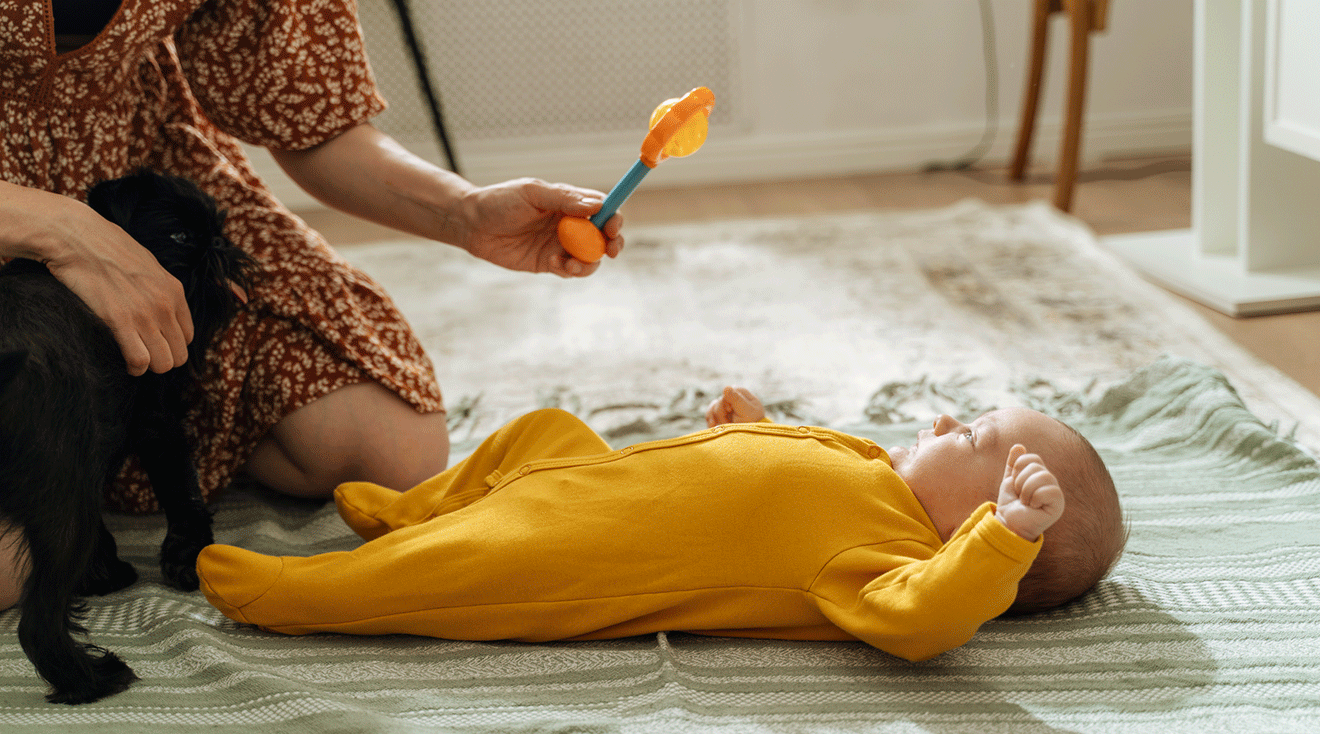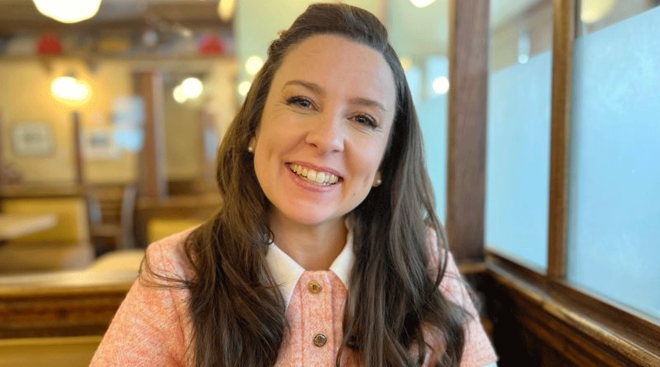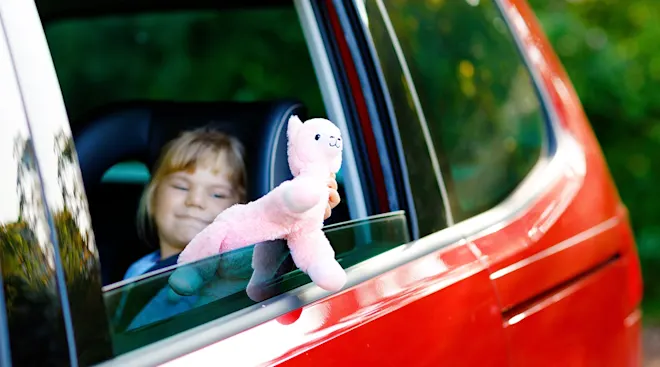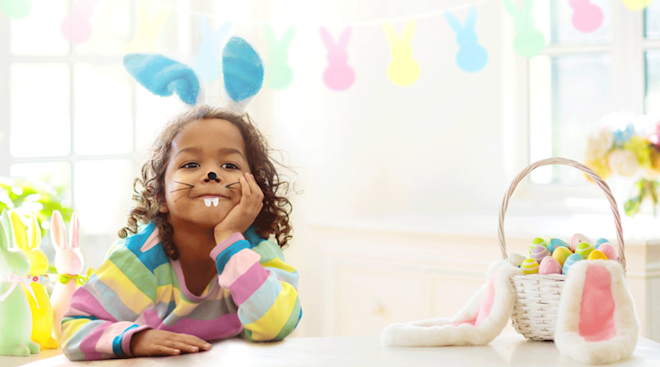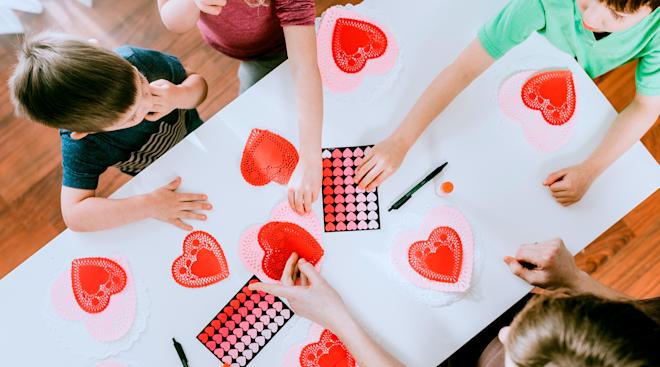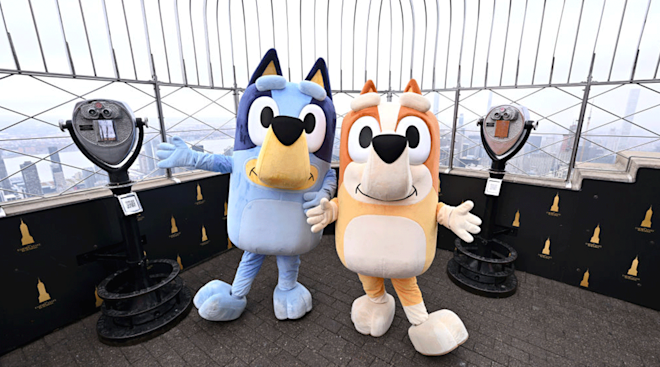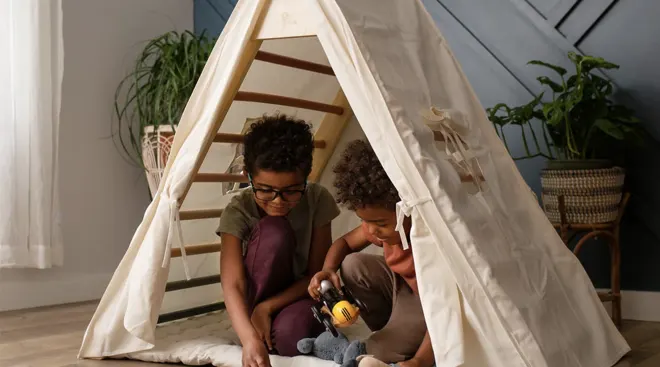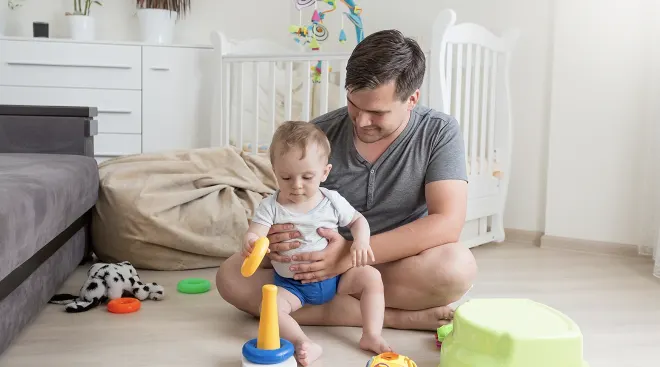Playtime Made Simple: 16 Fun Games for Babies
Between tummy time and naptime, you might be searching for other activities and games to help engage baby.
“Playing with babies from an early age sets the stage for motor, language and social skill development, and it strengthens the bond between parent and child,” says Kimberly Kubistek, OTD, OTR/L, CNT, coordinator of occupational therapy services at UPMC Children’s Hospital of Pittsburgh.
To begin, create a safe environment for independent exploration using toys, rattles and mobiles, Kubistek suggests. Next up? Try smiling at baby, making eye contact with them, talking to them, singing to them, dancing while you hold them and reading books—all of which are great ways to interact, no toys required.
This kind of play doesn’t need to be scheduled—just work it into diaper changes or before and after naps or feedings, Kubistek suggests: “It’s an opportunity to have fun and interact during your daily routine.” Whether your little one plays for five minutes or 30, take a break when baby seems tired or frustrated to keep play positive, she adds.
And above all? “Keep it simple and fun!” says Cathryn Stamatos, MD, a pediatrician at Tribeca Pediatrics in Glen Cove, Long Island. “Your baby is naturally curious about everyone and everything in their environment.”
Read on for specific ideas for fun games for babies from Kubistek and Stamatos.
Believe it or not, there are ways to play and interact with your newborn. Below, some sweet ideas.
Hi, toy!
Place baby on their back on the floor, then position a toy or another object 8 to 12 inches away from baby’s face in their line of sight. You can greet the object—“Hello ducky!”—or hang it from a mobile and simply let them study it. See which objects hold their attention longest, and swap in new objects to keep things interesting.
“Object permanence doesn’t really emerge for another couple of months, so a disappearing/reappearing act is truly like a magic trick for baby. The amazement on their tiny face when something suddenly comes back into their view is really a marvel. Yep, Mommy is a magician in more ways than one.” - Lauren B., The Bump associate content director and mom of three
Where did it go?
After a diaper change, talk or sing to baby to get their attention. Next, move a high-contrast black-and-white object or card from side to side in front of their face slowly to encourage eye tracking and head movements. When you reach the edge of their peripheral vision, you can ask, “Where did it go?” then bring it back into their view.
I see you!
With baby in the modified tummy time position of lying on your chest as you recline, encourage them to lift their head up to see you, Kubistek suggests.
Peek-a-boo!
Prop baby up in a safe place (like in bed on your lap with your legs elevated and knees bent for support) with your face near theirs. Next, hold a burp cloth in front of your face, then remove it with a “peek-a-boo!” While everyone loves a giggle, “don’t expect a response other than looking at you, smiling and cooing,” Kubistek says—but continue playing peek-a-boo throughout the first year of life, and you can bank on getting the laugh you’re looking for.
Baby is out of the newborn stage and growing up right before your eyes. Engaging in some games with infants can also help you see how much they’re developing. Here, a few ways to bring out their sweet personality through play.
Show and tell
Place baby chest-down on a mat, and position colorful objects in front of them in a semicircle. Show them the objects and how they’re used (i.e., a rattle to shake, shake, shake!) and encourage them to reach, hold or look at the toys. You can also place a towel rolled up like a noodle or semi-circular pillow under baby’s chest with their arms positioned over the top to provide extra support and enable them to access the toys more easily, which will come more naturally to them as they get older.
“You got it!”
Sit with your legs in a “V” and place baby between them with your belly to their back to provide sitting support. Placing tall toys in front of you—like a stuffy—encourages them to reach for the object. When they go for it, support them with both hands so they don’t fall forward.
Toy hide and seek
In the same position described above, cover a toy with a towel or blanket, then remove it for the ultimate surprise.
Sound imitation
When baby makes a sound, imitate it: Encourage this back-and-forth vocal sound play, and baby will soon learn to imitate your sound. “This is a foundation for language development and conversation,” says Kubistek.
Baby is showing off and doing all sorts of new things. Now is a great time to get silly and play together. Try these fun activities.
Bang! Bang! Bang!
Position baby in their high chair, then bang two toys such as blocks or even spoons together. Next, present the toys on their tray. If baby doesn’t imitate you right away, help them by placing the objects in their hands and using your hand to bring theirs together. You can also model clapping with your hands, and/or play some music to provide a beat.
“Who’s that baby?”
Hold baby facing forward in front of a wall mirror. Move closer to the mirror and ask them, “Who’s that baby?” Then answer, “Baby Emma!” (or whatever baby’s name is!) and give her a tickle or a kiss.
Up you go!
Encourage baby to crawl by helping them get up on their hands and knees from their tummy: Once they push up using their arms, help them bend one knee at a time under their body, and remain at the ready for them to fall forward until they get the hang of it. As they become more comfortable in this position, promote crawling by moving toys a little further away from them, encouraging them to go get them.
Sing action songs
Add “Wheels on the Bus,” “Itsy Bitsy Spider” and other baby songs to your repertoire, encouraging hand motions like spinning hands when the wheels go “‘round and ‘round,” and hands overhead when the spider goes up the spout.
Your almost one-year-old is always ready and willing to show off new skills. These infant games will help them develop self-esteem while having fun.
Stack the blocks
Demonstrating how toys work facilitates learning, motor skill development and problem-solving skills—plus, it strengthens your bond and your child’s confidence in their abilities, says Kubistek. So show baby how to stack blocks or cups, then knock them down and rebuild them again, she suggests.
Pat-a-cake
Prep your little one for their first birthday cake with this classic tune, encouraging them to clap then bring their palms to yours as you sing.
Standing scavenger hunt
Place toys along the edge of the couch or coffee table and encourage baby to hold on and walk along the furniture to “hunt” for the next toy, allowing them time to play with each.
Roll the ball
Sit on the floor in front of baby and roll a medium-sized ball to them, then encourage them to push it back to you.
Test out the ideas above to see which games excite baby at every stage. And remember: There’s no wrong way to play with your little one, so enjoy!
Plus, more from The Bump:
Kimberly Kubistek, OTD, OTR/L, CNT, is the coordinator of occupational therapy services at UPMC Children’s Hospital of Pittsburgh. She’s a member of the American Occupational Therapy Association (AOTA) and earned her Clinical Doctorate in Occupational Therapy from Misericordia University in Dallas, Pennsylvania.
Cathryn Stamatos, MD, is a pediatrician at Tribeca Pediatrics in Glen Cove, Long Island. She received her medical degree from Hahnemann University School of Medicine in Philadelphia.
Navigate forward to interact with the calendar and select a date. Press the question mark key to get the keyboard shortcuts for changing dates.

































